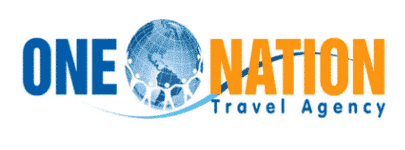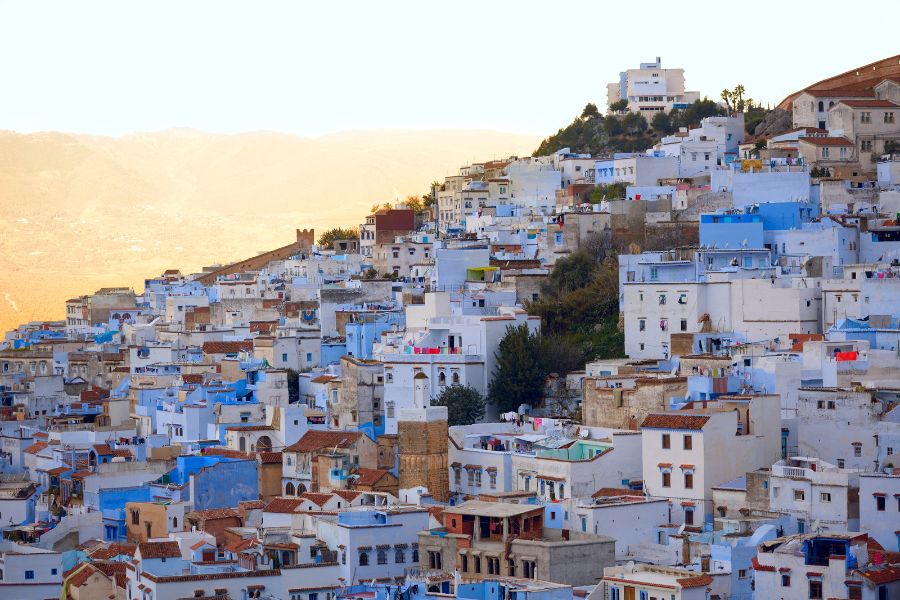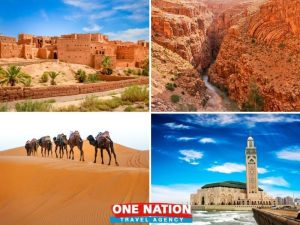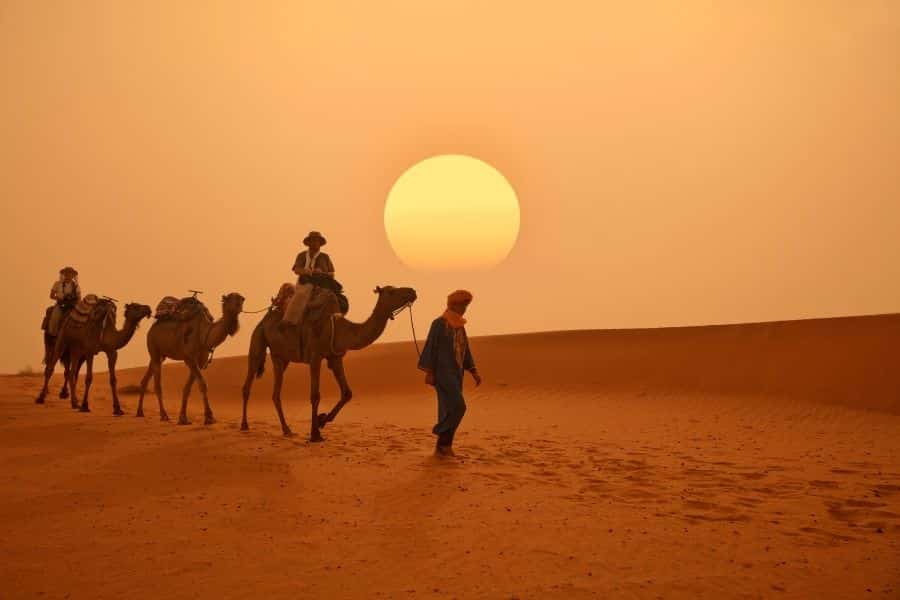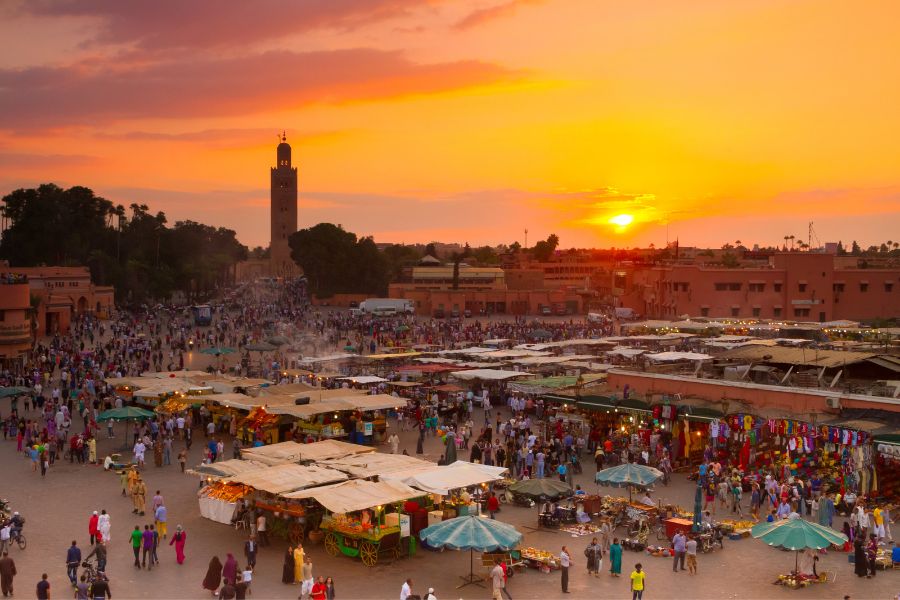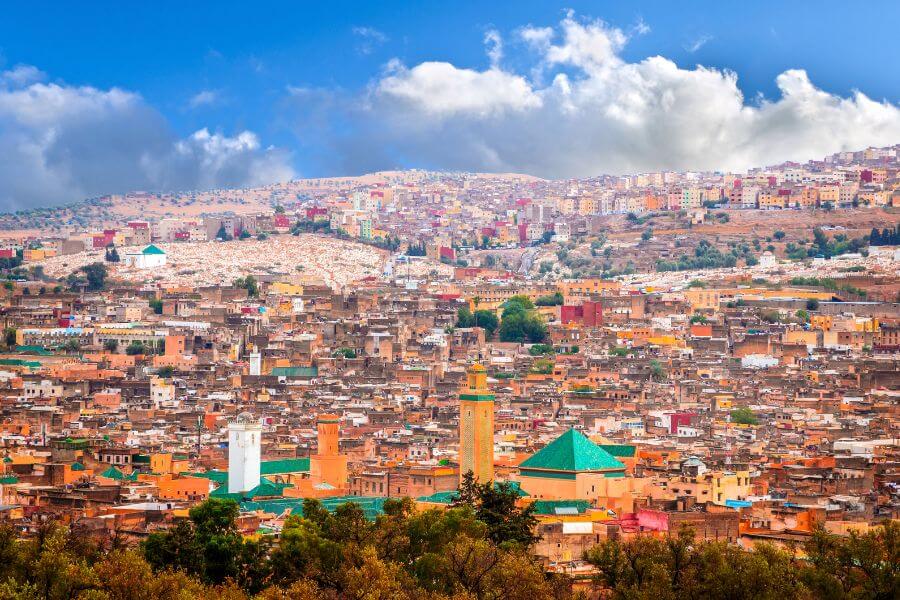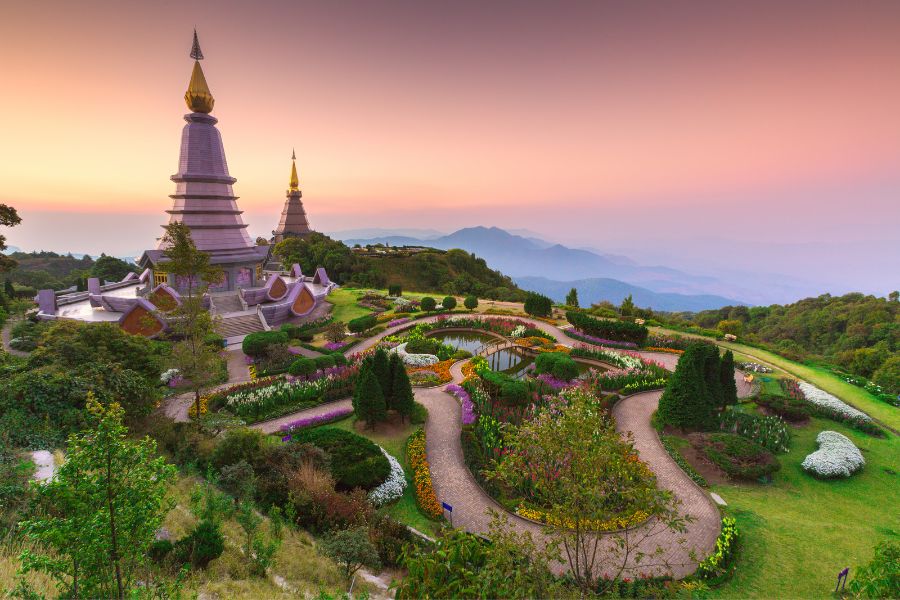The Ultimate Guide to Morocco: Discover Exotic Beauty & Culture
Explore the Best of Morocco’s Diverse Culture
Introduction: A Melting Pot of Cultures
Morocco, nestled between the azure waters of the Atlantic Ocean and the towering peaks of the Atlas Mountains, is a wonderland teeming with cultural riches, historic landmarks, mouth-watering cuisine, and bewitching landscapes. It’s a place where time seems to stand still, where the ancient and the modern meet in a vibrant display of color, sound, and taste. This Ultimate Guide to Morocco seeks to open the door to this mysterious and enchanting world, revealing its hidden treasures and guiding you along the paths less trodden. So, let’s pack our bags and set off on an adventure to remember!
Embark on an exclusive journey through Morocco with One Nation Travel’s Morocco private tours, where unforgettable desert escapades and historical explorations await.
The Ultimate Guide to Morocco: A Peek Behind the Curtain
Morocco – its name alone evokes images of towering minarets, bustling souks, verdant oases, and intricate geometric designs that are as mesmerizing as they are complex. But this country is more than just its captivating aesthetics. Let’s unravel the mesmerizing layers of this country in our Ultimate Guide to Morocco.
A Stroll Through Time: The History of Morocco
First, let’s delve into the historical backdrop that has shaped Morocco into the cultural powerhouse it is today. Located on the northwestern corner of Africa, Morocco is a gateway between continents, bearing witness to a myriad of civilizations and influences, from the ancient Berbers and Romans to Arabs, French, and Spanish colonial powers.
The story of Morocco is told through the ruins of Volubilis, the ancient Roman city, and the medieval alleys of Fes, boasting one of the world’s oldest universities. The fortresses of Marrakesh, the Imperial city, stand as a testament to the nation’s glorious past, while Casablanca, with its blend of Art Deco and Moorish architecture, epitomizes the country’s vibrant present.
Tapestry of Cultures: Moroccan People and Languages
The cultural fabric of Morocco is woven from a tapestry of Berber, Arab, French, and Jewish threads, among others. These diverse cultures have coexisted and intertwined over centuries, resulting in a nation characterized by tolerance, acceptance, and mutual influence.
The languages spoken mirror this cultural melange, with Moroccan Arabic, or Darija, being the most widely used. However, Amazigh languages, French, and even Spanish are not uncommon, especially in certain regions.
A Feast for the Senses: Moroccan Cuisine
No guide to Morocco would be complete without discussing its vibrant culinary scene. Moroccan cuisine is a delectable blend of Mediterranean, Berber, Arab, and French influences, utilizing a colorful palette of spices and local produce. From the famed couscous and tagine to the refreshing mint tea and heavenly pastries, Moroccan cuisine promises a gastronomic journey like no other.
Venturing into the Moroccan Landscapes: An Explorer’s Delight
Tales of the Sands: Sahara Desert
The awe-inspiring Sahara desert holds sway over a significant portion of Morocco. Whether you opt for a camel trek under the star-studded sky or decide to experience the life of a nomad in a Berber tent, the Sahara promises an adventure you will never forget.
Oases of Serenity: Morocco’s Palm Groves
Dotted across the arid landscapes, Morocco’s palm groves, or palmeraies, offer a welcome respite from the desert heat. These oases, teeming with date palms, fruit trees, and trickling streams, provide not only sustenance but also a unique insight into the ingenious agricultural practices of the locals.
Scaling the Heights: The Atlas and Rif Mountains
From the arid plains, we move up to the lush, verdant peaks of the Atlas and Rif Mountains. A hiker’s paradise, these ranges offer countless trails through verdant forests, Berber villages, and snow-capped peaks. For those seeking solitude and tranquillity, the crisp mountain air and sweeping vistas provide an unbeatable retreat.
Diving into the Bustling Cities and Ancient Medinas
Where Traditions Meet Modernity: Marrakesh
No trip to Morocco would be complete without visiting Marrakesh, a city where past and present coexist in an enchanting dance. From the bustling Jemaa el-Fnaa square to the serene Majorelle Garden, Marrakesh offers a captivating blend of sights, sounds, and experiences.
Journey through History: Fes
As one of the world’s oldest continually inhabited cities, Fes is a journey back in time. The labyrinthine streets of the medina, brimming with artisan shops, food stalls, and ancient mosques, invite visitors to lose themselves in a bygone era.
The Blue Pearl: Chefchaouen
Tucked away in the Rif Mountains, Chefchaouen, or the Blue Pearl, captivates visitors with its blue-washed buildings and relaxed pace. Whether you’re strolling through the cobbled lanes, savoring local delicacies, or soaking in the spectacular views from the Spanish Mosque, Chefchaouen is a feast for the senses.
FAQs: The Ultimate Guide to Morocco
1. What is the best time to visit Morocco?
The best time to visit Morocco depends on the region you plan to explore. Spring (April to June) and fall (September to November) offer the most pleasant weather for most of the country. However, if you plan to visit the Sahara desert, the cooler months of November to February would be more suitable.
2. Is it safe to travel to Morocco?
Yes, Morocco is generally safe for travelers. However, like any travel destination, it’s essential to take standard precautions, such as avoiding deserted areas at night and safeguarding valuables.
3. What currency is used in Morocco?
The official currency of Morocco is the Moroccan Dirham (MAD). Many shops and restaurants in larger cities also accept credit cards.
4. Do I need a visa to travel to Morocco?
Visa requirements for Morocco vary depending on your country of residence. As of now, citizens of over 60 countries, including the US, Canada, and the UK, can enter Morocco without a visa for up to 90 days.
5. What language is spoken in Morocco?
Moroccan Arabic, or Darija, is the most commonly spoken language. Berber languages are also widely spoken, especially in rural areas. Many Moroccans speak French, and English is becoming increasingly prevalent, particularly among the younger population.
6. What should I wear in Morocco?
Morocco is a predominantly Muslim country, so it’s recommended to dress modestly, especially when visiting religious sites. Loose-fitting clothes that cover your shoulders and knees are generally acceptable. However, in tourist areas and larger cities, dress codes are more relaxed.
Top 3 Exceptional Tour Packages for an Unforgettable Moroccan Adventure
-
 7-Day Morocco Imperial Cities TourFrom: $1,680.00
7-Day Morocco Imperial Cities TourFrom: $1,680.00 -
 6-Day Morocco Desert Tour from MarrakechFrom: $1,570.00
6-Day Morocco Desert Tour from MarrakechFrom: $1,570.00 -
 7-Day Morocco Desert Tour from Casablanca to MarrakechFrom: $1,570.00
7-Day Morocco Desert Tour from Casablanca to MarrakechFrom: $1,570.00
